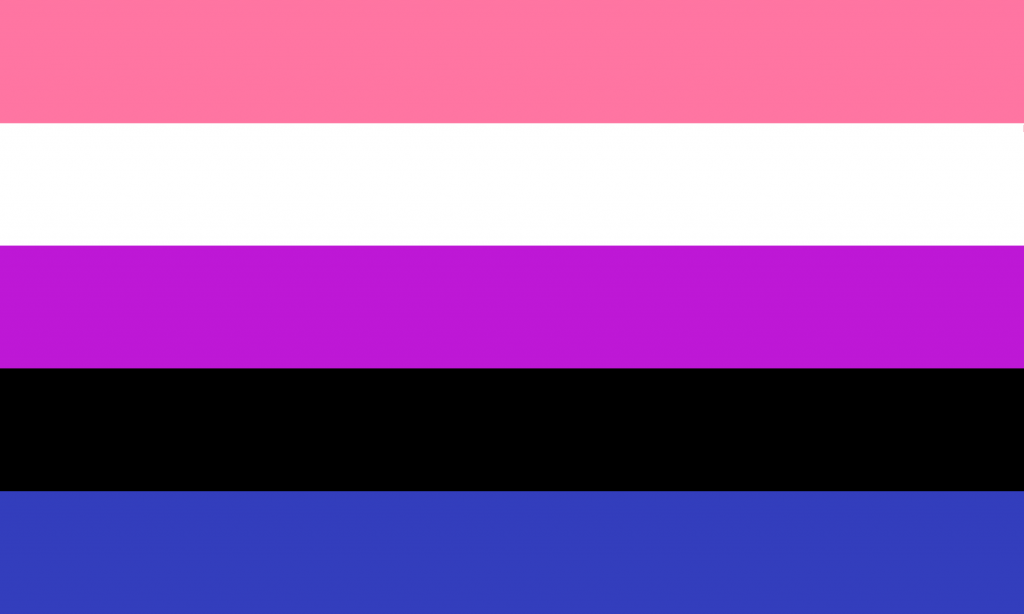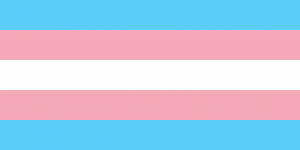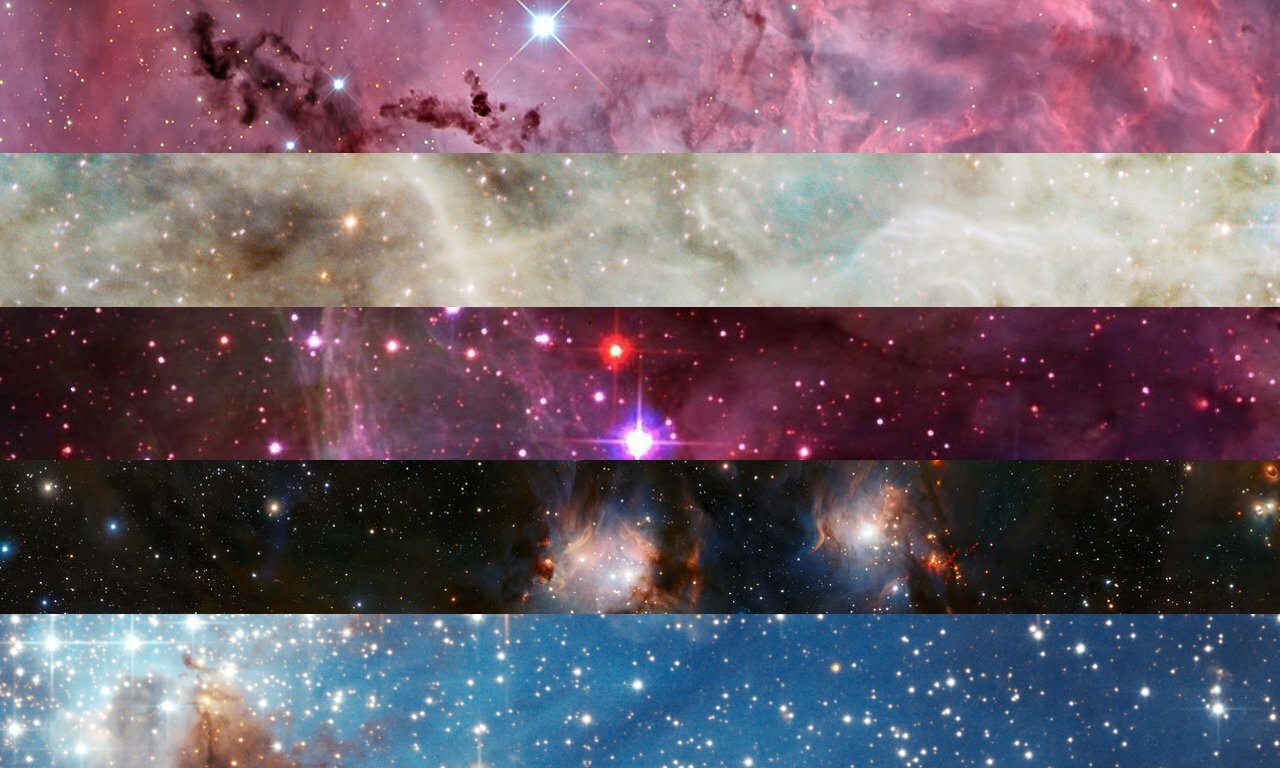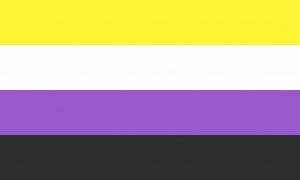Genderfluid is when someone’s sense of gender shifts in a fluid way. It covers a huge range of different gender experiences. There are countless ways for a person to be genderfluid.
Some genderfluid people shift from female to male and back again within the span of a week. Others shift between being completely genderless (agender) and being a combination of male and female (androgyne), and the shift takes a lot longer.
Almost any other gender identity can be part of the genderfluid experience of gender. The variety of different and complex people described by this word is mindblowing.
The genderfluid symbol
There isn’t just one set genderfluid symbol, because there are so many different ways to be genderfluid. But here are two examples.
This version of the genderfluid symbol is for people whose gender flows between male and female.

Whereas this version below represents folks whose gender flows between demigirl and third gender (both gender identities I still need to write about).

As you can see, in both cases the genderfluid symbol is characterized by the vortex-like extensions from the center circle.
The genderfluid flag

The genderfluid flag was created in 2012 by an artist named JJ Poole. It has five colors, each with a concept related to genderfluidity that it symbolizes:
- At the top edge, the pink represents femininity
- White represents the infinite ways that genders can combine
- In the center, the purple represents a combination of masculinity and femininity
- Black represents the absence of gender
- At the bottom edge, blue represents masculinity
If you’re curious about other gender pride flags, you can learn more about them here.
Genderfluid people are nonbinary
Genderfluid people are nonbinary, a word that includes everyone whose gender isn’t strictly male or female.
But not all nonbinary people are genderfluid. There are nonbinary folks whose genders are experienced in a more consistent way—like me, for example. I’m agender, and my gender doesn’t shift. I have never experienced gender even once.
Other folks experience gender fluctuations, combinations, and switches that are different from the genderfluid experience.
Which brings me to this next distinction …
Genderfluid is different from polygender
There are a collection of gender identities that are covered by the term polygender, which, like genderfluid, includes people who experience multiple different genders. (Polygender literally means “multiple genders.” Bigender and trigender are more specific subcategories, including folks with two or three genders, respectively.)
But the way they experience multiple genders is different.
While a genderfluid person will experience a fluid and sometimes gradual shift between genders, polygender people will experience more sudden switches between their gender identities—and will also sometimes experience these gender identities at the same time. (This is also a type of gender identity I will eventually write a post about.)
Some genderfluid people identify as trans

Genderfluid people are nonbinary, and nonbinary people are part of the transgender community of people. If a person is transgender, it means that the gender they were assigned when they were born is not accurate to who they actually are.
(Not all genderfluid people feel comfortable identifying with the trans label, though, and this can be for a variety of reasons. That just means to be conscious that you don’t push the “trans” label on anyone unless they claim it for themselves.)
Some genderfluid people pursue medical transition; some don’t
As is the case for all transgender people, medical transition is not necessary in order for a person to be who they say they are. A genderfluid person is just as genderfluid if they never pursue any surgeries or hormone therapies.
As you can probably imagine, being genderfluid makes the idea of pursuing any sort of medical transition quite complicated for a lot of folks. They need to prioritize different aspects of how they’d like to present themselves that are sometimes contrasting with each other. Each genderfluid person walks a unique path based on their unique experience.
Some genderfluid people experience gender dysphoria all the time. Some experience it only some of the time, and some don’t experience it at all.
Some genderfluid people use gender neutral pronouns like they and them. Some use she/her or he/him. Some use different pronouns depending on the day! If you’re not sure what the right pronouns to use for someone are, just politely ask them.
Being genderfluid is complex and varied, and there’s still a lot we’re learning about it.
Personally, I think genderfluidity is fascinating, and I hope you enjoyed this small look into it. Like all articles on this site, this one will be regularly updated as I gain new knowledge and context. If you have any thoughts, questions, or resources relating to what it’s like to be genderfluid, I’d love to hear about them in the comments.

